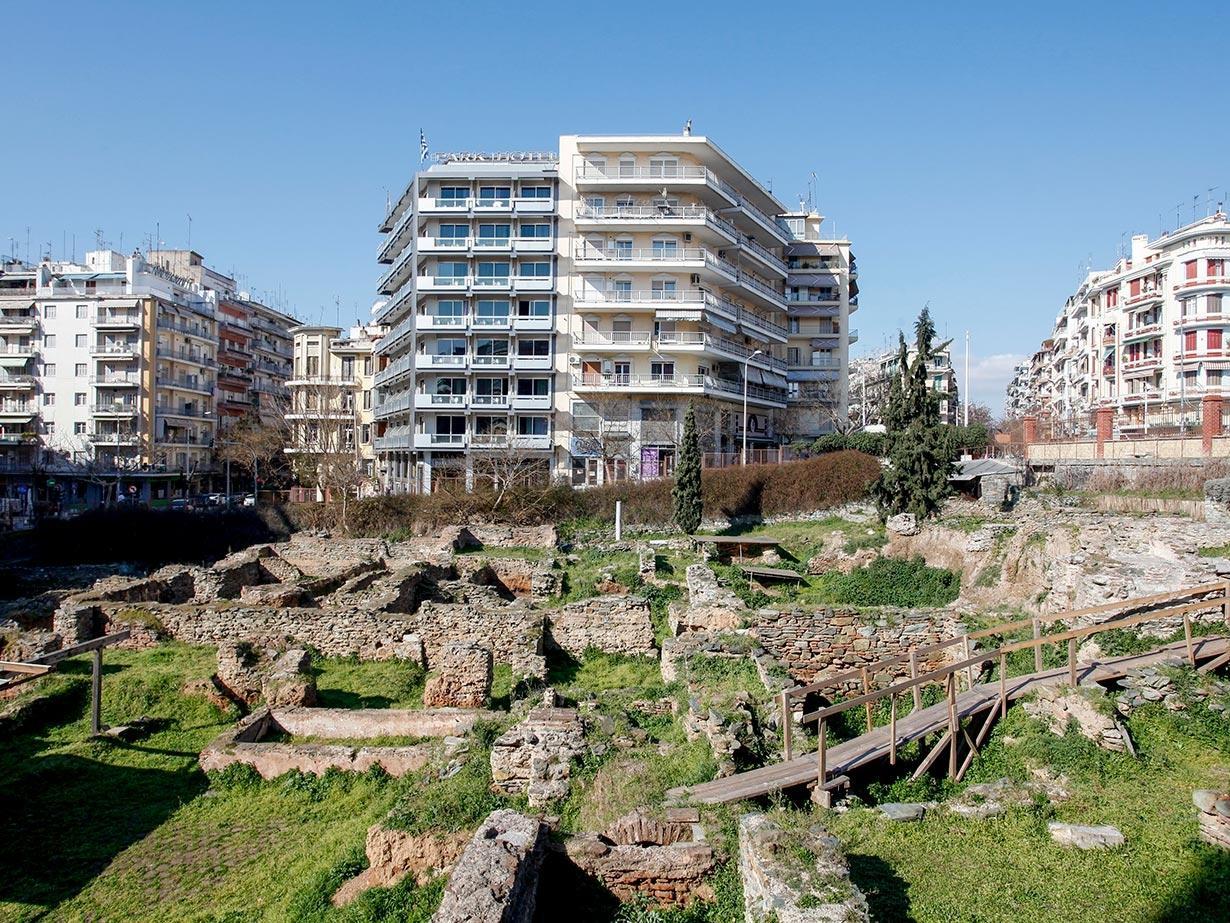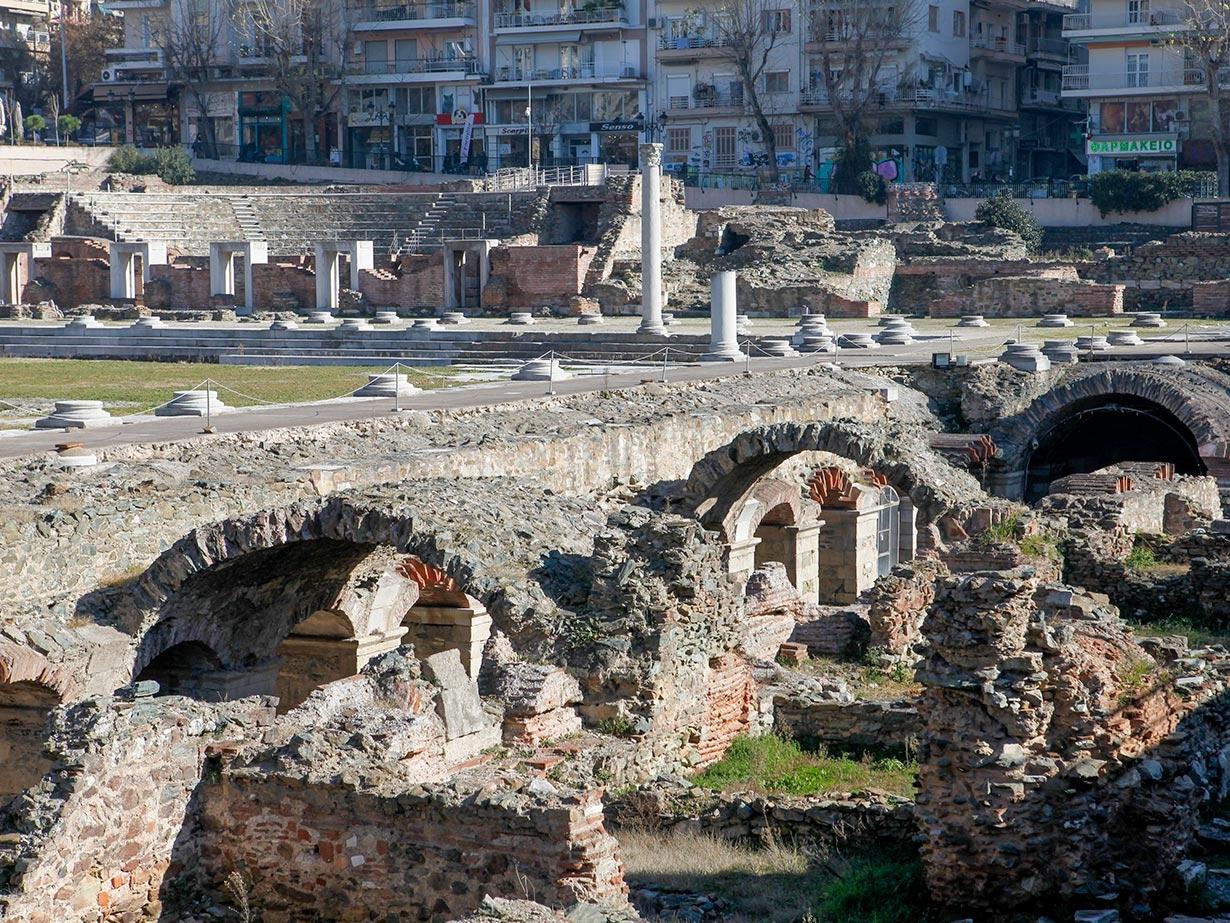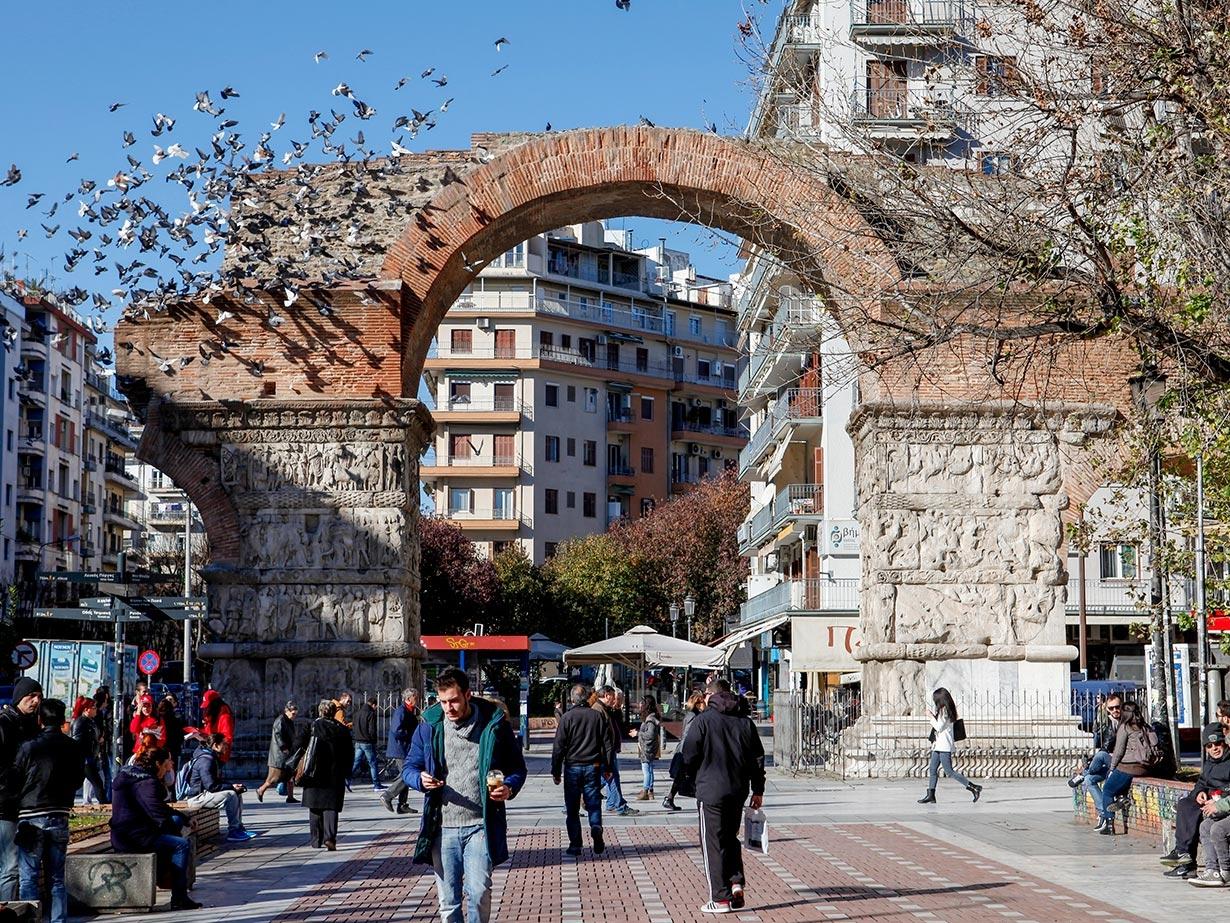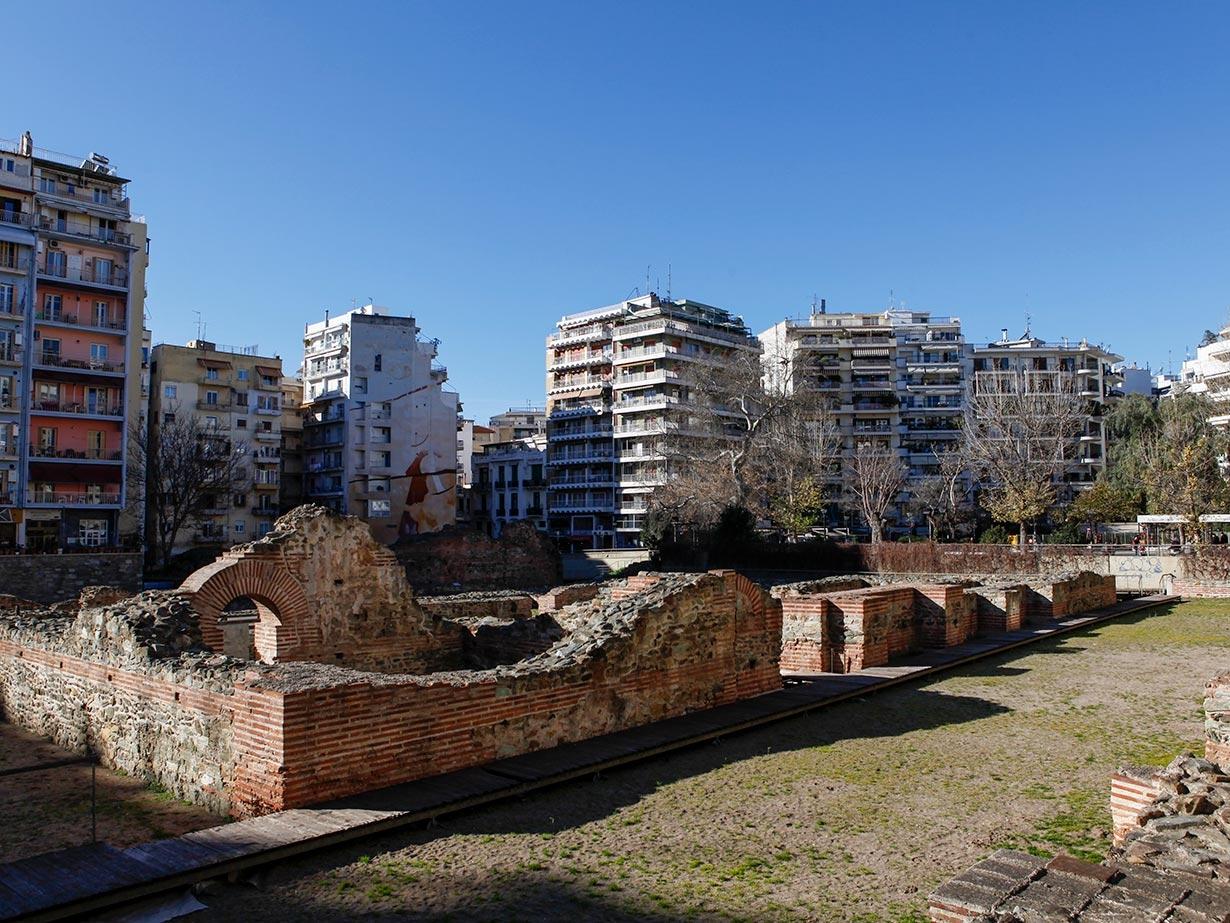Roman Route
The Roman route of Thessaloniki through time begins in 168 BC when the Roman general Lucius Aemilius Paul defeats the king of Macedonia Perseus. As the Capital of the second Roman administrative region of Macedonia, Thessaloniki is geostrategically upgraded with the construction of the Egnatia road (Via Egnatia) which connects the Adriatic with the Dardanelles and Asia Minor and becomes a commercial, political and military center. The Roman Thessaloniki will find itself on the way of the Apostle Paul in 50 AD and the seed of his teaching will flourish by the subsequent foundation of the Christian community in the city. In fact, St. Paul’s two Epistles ‘Thessalonians’ are the oldest texts of the New Testament.
During the reign of Caesar Galerius Maximilian, splendid buildings are being built, and you can explore them by following the Roman route, as entire or parts of them are being preserved till this day!














